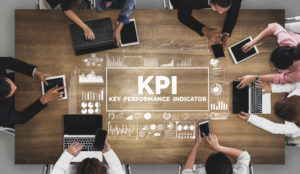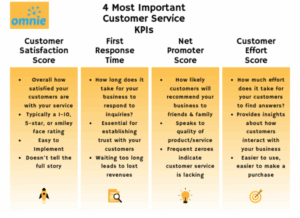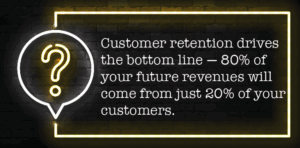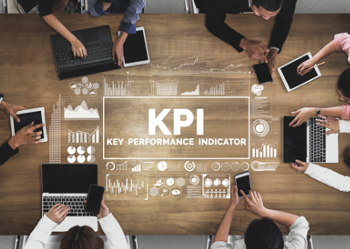
How are you currently measuring your business’s customer service performance?
Although key performance indicators (KPIs) like costs, profits, and cash flow can tell you how your business is performing financially, customer service metrics provide vital qualitative insights about how your business interacts with its customers.
Customer service KPIs offer context and tell a valuable story — and they’re frequently overlooked by many business owners, resulting in productive inefficiencies and lost profits.
Timely and professional customer service is crucial to a business’s long term strategy and ultimately, its success. With the right tools, customer service KPIs can help you better determine areas of your business that may need improvement, from the perspective of your customers.
Why Are Customer Service KPIs Important?
Customer service KPIs offer critical information about how your customers engage with your business, how effectively your team responds to inquiries, and how you can optimize the customer experience.
There are often gaps between the customer support services a business provides and what its customers are actually looking for. Constructive customer service KPIs help close this gap — leading to greater productivity, lower costs, and higher profits.
Buyers are more concerned about satisfying and prompt customer service than ever before. Missing customer inquiries translates directly into lost revenue. The quality of support service also affects customer loyalty and repeat business.
Although every business is different, we believe tracking the following 4 customer service KPIs generate the best actionable insights to ensure your customers feel satisfied upon each visit.
The 4 Most Important Customer Service KPIs In 2021

1. Customer Satisfaction Score (CSAT)
The Customer Satisfaction Score offers a general sense of how satisfied your customers may be with your product or services. It is one of the most common customer service KPIs in use — you’ve almost certainly contributed to many, many CSATs in your lifetime.
CSATs often come in the form of a simple question:
“Overall, how satisfied are you with our services?”
Depending on the company’s chosen format, you might rate the services with stars, smiley faces, or on a scale of 1-10. Others might simplify the question to an easy yes or no answer.
The CSAT is a good place to start. It’s easy to implement, cost-effective, and useful for getting a high-level view of how customers may perceive your current level of customer service.
In this case, a frequent number of smiley faces, 5-star reviews, or 10/10 responses may indicate customers are overall satisfied with your products or services. With that being said, you may want to reevaluate your customer service practices if responses are often a sad face or 1-star review. .
The CSAT doesn’t provide much information into why customers are satisfied or dissatisfied — however, patterns can emerge when used in addition to customer service metrics like First Response Time.
2. First Response Time (FRT)
First Response Time is one of the most critical KPIs in regard to customer satisfaction and retaining long-term business.
FRT is the amount of time it takes for a team member to respond to a customer’s initial request — this KPI is essential for establishing trust with your customers and can often be the deciding factor between a sale and a lost customer.
Expectations can vary wildly depending on how the customer chooses to initially engage with your business. In the case of live chat, for example, customers expect a near instantaneous response — even 30 seconds can make all the difference.
If the customer reaches out by phone, they may be willing to wait a few minutes before speaking to an agent.
Email can be more forgiving but responding within 24-48 hours is the industry average. Responding in under 3 hours is how you elevate customer loyalty.
Faster responses directly translate into increased customer satisfaction, retention, and ultimately greater revenues.
Waiting too long leads customers into looking at other options. Responding as soon as possible also shows the customer you’re there when they need you — building confidence with the business.
The first response doesn’t need to be complicated. Simply acknowledging the customer has a question is a good start and can give you additional time to find the right answer.
With prompt and quality service, they may even recommend you to a friend or family member.
3. Net Promoter Score (NPS)
Word of mouth and social influence are extremely powerful forces on buyer decisions. How many times have you answered the following question:
“On a scale of 1-10, how likely are you to recommend our products to friends or family?”
Net Promoter Score is concerned with the likelihood your customers will go on to speak positively (or negatively) about your business within their social circles.
People love to influence the world around them — and go out of their way to promote or condemn businesses they feel are worthy of either sentiment.
This metric offers an additional level of insight because it speaks to the quality of the product or service itself and how effectively the business responds to inquiries. A high NPS usually indicates customers trust the business and receive adequate support when needed.
Frequent zeroes could mean the product is not living up to expectations and/or customer service is lacking. This metric may be tied to how difficult it is to access the right channels when the customer is in need.

Source: Forbes
4. Customer Effort Score (CES)
Have you ever tried to use your own customer service channels? Was it seamless or frustrating?
It may be a wise idea to try for yourself if you haven’t. Many businesses have overly complicated processes to reach the answers customers seek — sometimes they may not be able to access them at all.
Customer Effort Score refers to how easily customers can find the right answer to their question. In other words, how much work did the customer have to do in order to find a resolution?
Although it seems straightforward, CES requires an understanding of your customers’ demographics and how they interact with your business. A frustrating experience is highly likely to lead customers to a competitor.
Ease of use is the key factor — when customers can find answers with little effort, they’re much more likely to make a purchase, recommend products, and offer repeat business.
Omnie Integrated Services
The 4 KPIs listed above offer a brief insight into the importance of the customer service experience. These 4 KPIs just scratch the surface — there are many unique ways to optimize your customer service experience for the size of your business, industry, and goals.
Omnie believes every interaction is an opportunity to drive brand loyalty. Our solutions are designed to increase customer satisfaction and retain long term business.
Customer service is more important today than ever before — get in touch with our team to learn more about how you can elevate your customer experience.
